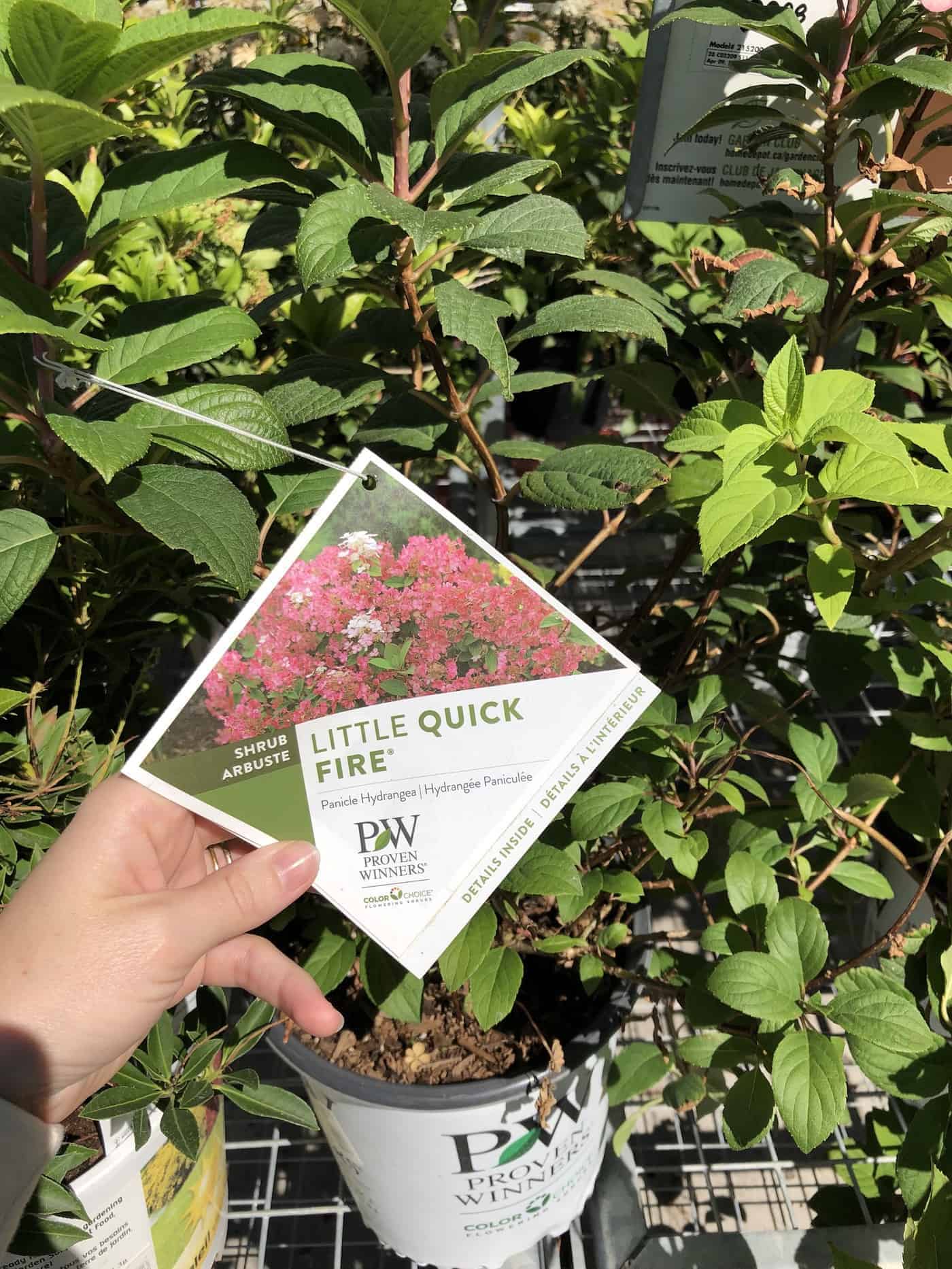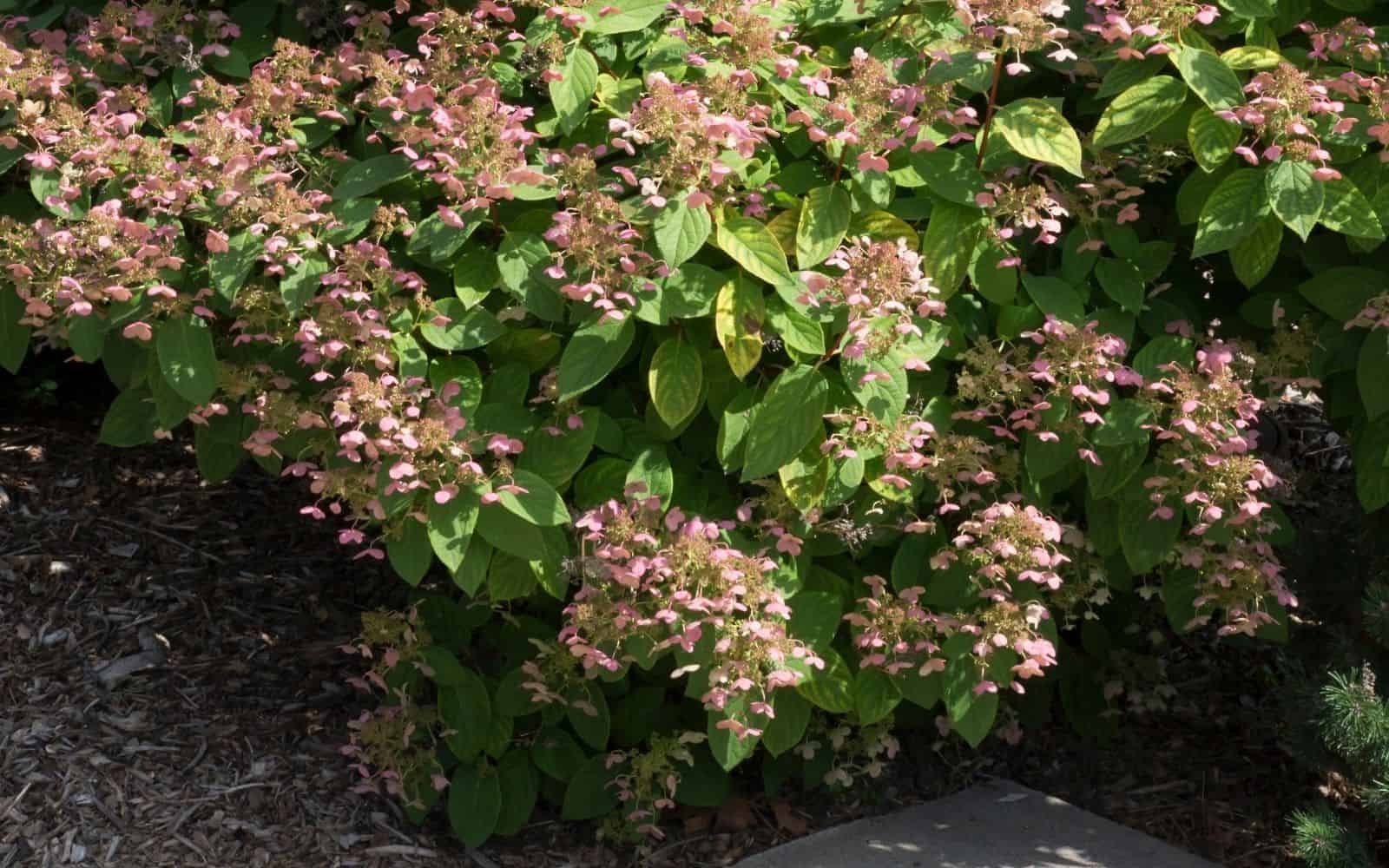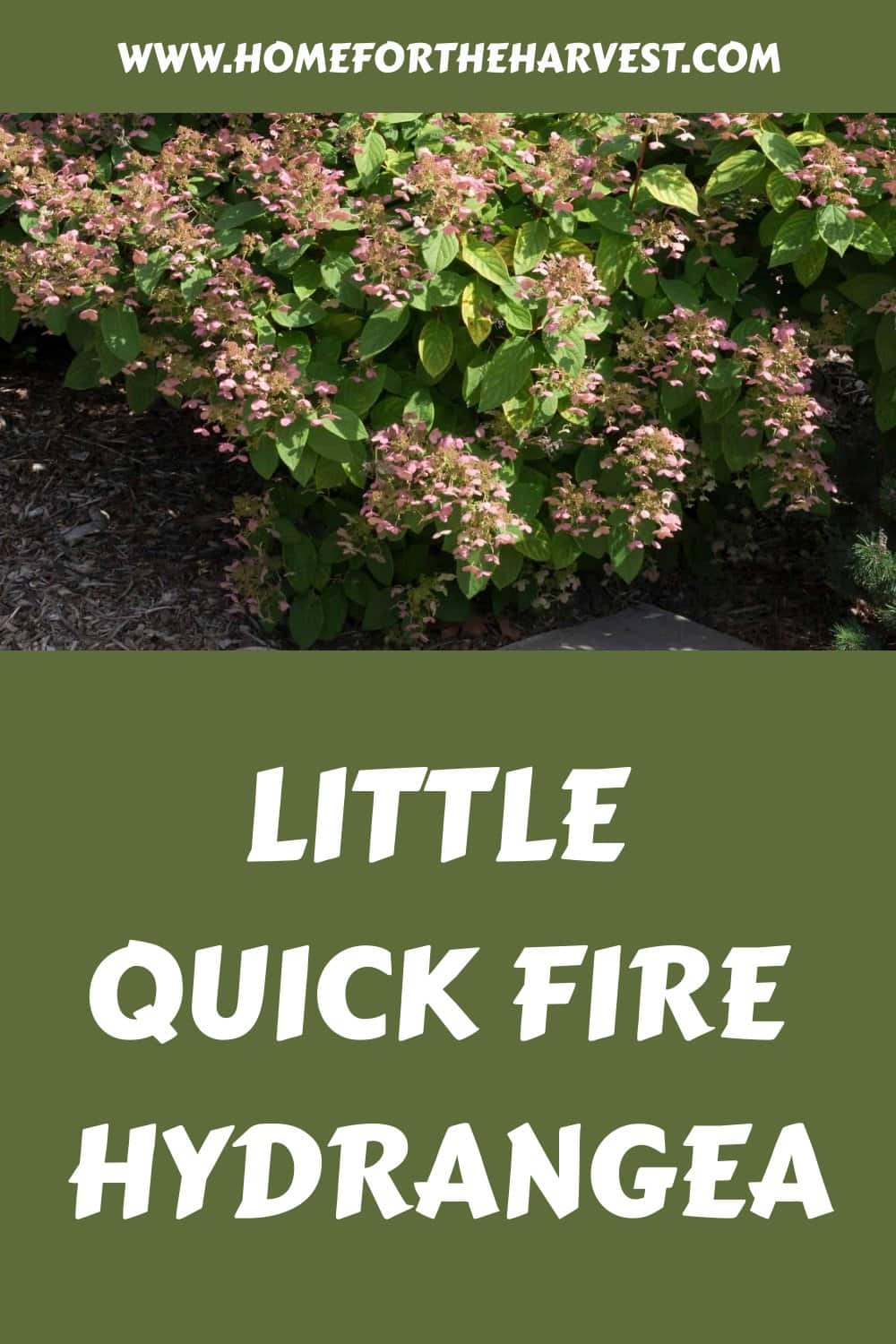Little Quick Fire hydrangea is a compact cultivar of panicle hydrangea known for its large, bold flowers and small, manageable size. The flower clusters bloom white, deepening to a red-pink color as summer progresses. These shrubs have strong stems, low maintenance requirements, and are very cold-hardy. The Little Quick Fire hydrangea is a Proven Winners color choice selection.
Little Quick Fire hydrangea basics
The Little Quick Fire Hydrangea is a type of panicle hydrangea with gorgeous flowers and a compact size in the landscape. As the name suggests, it’s a miniature version of the wildly popular Quick Fire Hydrangea. It is a deciduous shrub that flowers each summertime.
The Little Quick Fire hydrangea has white flowers when it first blooms, but the petals turn pink as summer gets warmer. These hydrangea plants bloom in the late spring or early summer, typically from June to August.
This type of hydrangea is a dwarf cultivar, and it only grows to be 1/3 the size of the regular Quick Fire Hydrangea, so it is considered to be quite small compared to many other hydrangea types. It’s also very easy to grow.
Little Quick Fire Hydrangeas grow 3 to 5 feet tall and 2 to 4 feet wide. They are considered to be dwarf shrubs, so they don’t grow to be as tall as many other hydrangea types. If you would like a hydrangea that does not grow to be very tall, but will still have full blooms each year, then a Little Quick Fire Hydrangea is a great choice.
Planting location preferences of Little Quick Fire
Little Quick Fire hydrangeas grow best when planted in well-draining soils and in an area with full sun or partial shade. It is best to plant them in partial shade when you live in a very warm area, but it is best to plant Little Quick Fire Hydrangeas in full sun when you live in slightly colder areas.
If you plant Little Quick Fire hydrangeas in the right place, the blooms will be vibrant, especially in the late summer months. Watching the petals turn from white to pink is fun for any gardener.

How to plant Little Quick Fire hydrangea
When you plant a Little Quick Fire Hydrangea, find a spot in partial shade to full sun, and ensure the soil drains well. When you find a place to plant it, dig a hole that is 1-2 feet deep and place the Little Quick Fire hydrangea in the hole. If you want to, place a small amount of fertilizer in the hole as well.
If you are planting multiple Little Quick Fire hydrangeas and do not want them to form a hedge, plant them 3 to 5 feet apart. If you do want them to form a hedge, plant them closer – 28 to 36 inches apart. After placing the hydrangea in the hole, cover it with soil again and gently pat it down. Don’t bury the plant any deeper than it was in the planter pot from the garden center. After the soil is in place, water the area around the plant until the soil is moist but not wet.
You should plant your Little Quick Fire hydrangea in the fall or in the early spring after the soil is soft again after the winter freeze. These hydrangeas grow relatively quickly, so you should see blooms in the summer after planting them.
Fertilizer for Little Quick Fire hydrangea
Little Quick Fire Hydrangeas are generally fed in the early spring and sometimes in mid-summer. Different fertilizer products have different guidelines for how much and how often to apply the fertilizer to the soil around the plant.
As with most plants, you must be careful about how much and how often you fertilize your Little Quick Fire Hydrangea. Too little fertilizer combined with naturally poor soil means your plants will develop paleness in their leaves and poor, slow growth.
Pruning Little Quick Fire hydrangea
You do not need to prune the Little Quick Fire Hydrangea, but if you choose to prune it you should do so during the late winter or early spring while the shrub is dormant. Little Quick Fire Hydrangeas bloom on newly-formed wood, so early spring pruning will not remove flowers as with some other types of hydrangeas.
When you do prune your Little Quick Fire Hydrangea, start by removing any branches that are dead, diseased, dying, or otherwise damaged. Remove them right down to the base of the plant. Then go ahead and remove any branches that are crossing and rubbing on other branches or that are not growing outwards from the center of the plant.
Growing Little Quick Fire hydrangea shrubs in containers
Little Quick Fire is one of the better variety choices for container growing. Hydrangeas grown in containers should be planted in a rich soil mix that’s about half store-bought potting soil. While most container mixes for potted plants are soil-less, this is a big enough plant in a big enough pot that it makes sense to add a little real soil in there. You could grow this in a large 15+ gallon pot or a wine barrel.
Water the potted shrub frequently – whenever the top 2 inches of soil dries out. Try not to let the entire pot dry out, as this can stress the plant and make the soil more difficult to rehydrate. Use an automated drip line if possible. An inch or two of composted organic mulch on the surface can help keep moisture in.
Potted shrubs are more susceptible to winter damage than the same shrub growing in the ground at the same location. The roots are above ground and exposed to temperature swings. The best way to protect your potted shrubs outdoors in the winter is to put them all together and pack mulch around the base so that the roots are protected.
Common pests that attack Little Quick Fire hydrangeas
Little Quick Fire Hydrangeas can be attractive to pests, including aphids, spider mites, slugs, and Japanese beetles. Fortunately, recognizing them is fairly straightforward. These pests are all possible to conquer if you have the right tools.
One is to wash the leaves and stems down with soapy water. Another is to treat the whole plant with an organic insecticide. You may have to treat more than once. Be sure to follow the application instructions and frequency guidelines for your chosen product.
Diseases affecting Little Quick Fire hydrangea
Little Quick Fire hydrangeas are less prone to disease than many other varieties. That said, they are somewhat susceptible to powdery mildew, bud blight, leaf spot, and bacterial wilt. Most of these are caused or exacerbated by overwatering, too much shade, or too little ventilation within your plant.
One way to treat disease is to decrease watering and increase air circulation around the plant. Alternatively, transplant it to an area with better soil drainage or more air movement. You can also use a natural fungicide spray.







